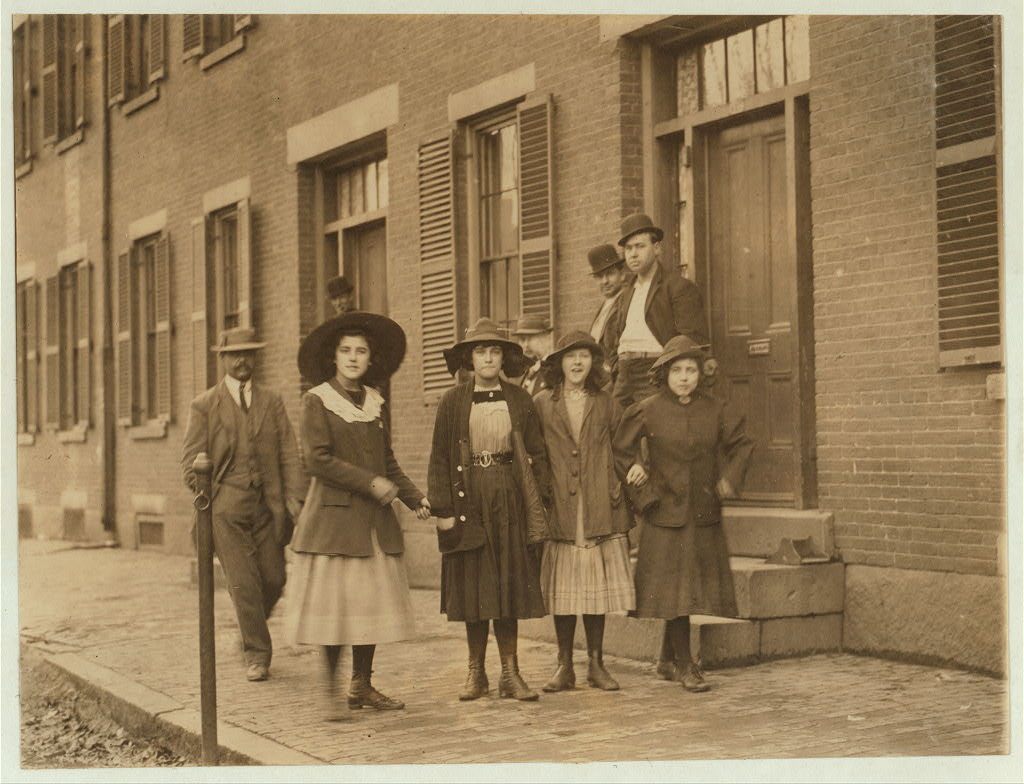Sarah Bagley, the Voice of America’s Early Women’s Labor Movement
In the 1830s and ’40s—before they could even vote—women mill workers agitated for equal treatment.

Today—March 8, 2017—people across the United States are taking the day off work, eschewing most purchases, and dressing in red. They’re participating in “A Day Without a Woman,” a nationwide action that aims, in the words of its organizers, to “recognize the enormous value that women of all backgrounds add to our socio-economic system, while receiving lower wages and experiencing greater inequities.”
While the problems these strikers aim to address are, famously, far from new, the tactics they’ve chosen are more storied than many people may realize. Driven by the foresight of the so-called “Lowell Mill Girls,” American women have been going on strike at least since the 1830s, and thanks to the powerful rhetoric of one woman, Sarah Bagley, they began officially organizing not long after.
The Industrial Revolution changed the makeup of the global workforce, and in the early 1820s, young women from across the United States flocked to Lowell, Massachusetts, seeking employment in one of the city’s many textile mills. While most “Mill Girls” took these jobs in order to send money home, they found their new employment came with a certain measure of financial and intellectual independence. In their few hours of free time, many attended lectures, swapped books, or learned from fellow workers in the dormitories.


Twenty-eight-year-old Sarah Bagley made her way to Lowell in 1835, leaving her home in New Hampshire in the hope that she’d be able to send some extra money back to her struggling family. Like many of the mill girls, she embraced the cultural environment in Lowell, and in 1840, Bagley published a short essay in the Lowell Offering, a monthly literary magazine written and edited largely by mill girls. In the piece, called “Pleasures of Factory Life,” Bagley ruminated on the various good parts of her job—the new friends, the learning opportunities, the potted plants the women placed around the factory floor—but she gave special weight to the space the job left for thinking.
As the body goes through the motions of twisting, pulling, and plucking, Bagley wrote, “all the powers of the mind are made active.” The looms themselves inspired further thought: “Who can closely examine all the movements of the complicated, curious machinery, and not be led to the reflection, that the mind is boundless,” she wrote, “and that it can accomplish almost any thing on which it fixes its attention!”
A few years later, exactly where Bagley had fixed her attention became clear. In the early 1840s, as factory owners tried to maximize profits in the face of a recession, the already-high demands of mill work ramped up. Many of these changes were sexist: In one mill, management cut wages for everyone; when the need for austerity ended, pay was raised again, but only for men. Another mill tried to double the number of looms that each weaver was responsible for. When a group of 70 women went on strike in response, they were not only fired, but blacklisted from ever getting another mill job. Earlier strikes by women workers—in 1834 and 1836—had ended similarly.
Bagley watched all of this go down, and in December of 1844, she and five other women formed the Lowell Labor Female Reform Association—“one of the earliest successful organizations of working women in the United States,” writes the National Park Service. Voted the Association’s president—and, soon after, fired from her mill job—Bagley quickly threw herself into her new role, at once broadening her audience and sharpening her rhetoric. She oversaw a membership that eventually numbered over 600, and pledged solidarity with the largest existing union, the New England Workingmen’s Association. In one of her most famous speeches, she turned herself against her old publisher, the Lowell Offering, accusing them of censoring worker dissent. The speech was greeted, the local labor paper reported, by “loud and unanimous huzzahs.”
Over Bagley’s three-year term, the Association took on multiple projects. The most pressing of these was the “Ten Hour Movement,” an attempt to get the grueling mill workday, which often lasted 12 to 14 hours, down to a slightly more manageable ten. This was a near-universal wish—“If I must wend my way / Uncheered by hope’s sweet song / God grant that in the mills a day / May be but Ten Hours Long,” went one popular worker tune at the time—and the Association gathered about 2,000 signatures in support. Bagley drummed up publicity for the cause by visiting nearby prisons to clock how much the inmates worked. (The answer: much less than the mill girls.)

Eventually, the Massachusetts legislature agreed to review the petitioner’s complaints only if the mill girls would speak in court, essentially challenging them to break a long-standing taboo against women speaking in public. Led once again by Bagley, the women called their bluff. “When our rights are trampled upon and we appeal in vain to our legislators, what are we to do? Shall not our voice be heard?” she said on the stand, before introducing six Association members who came forward to testify. Despite their accounts of sickness, injury, curtailed leisure, and lack of sleep, though, the state refused to reduce working hours.
Early on, the Association had chosen the motto “Try Again.” Now, they put it to good use. Mounting another appeal, they quintupled the number of petition signatories and defeated the re-election campaign of one prominent, unsympathetic member of the House. At the same time, the Ten Hour Movement spread to nearby states in New England and the Mid-Atlantic. In subsequent years, mill workers in many of these states, including Pennsylvania and Delaware, successfully bargained, legislated, and struck the workday down to ten hours. (Massachusetts eventually got there too, in 1874.)

Bagley stepped down as Association president after three years, but throughout her life, she remained devoted to women’s equality and empowerment. In 1846, she was hired as the country’s first female telegraph operator—but after she realized she wasn’t being paid as much as her male counterparts, she quit. (“The world is quite satisfied with the present arrangement, and we can only protest against such a state of things,” she lamented to a friend at the time.) She moved back to Lowell and continued agitating and organizing for several years, before moving to New York and working as a homeopathic doctor.
A century and a half after Bagley and her compatriots began to organize for women’s labor—and despite enormous, hard-won strides—American women are still fighting many of the same fights: for good working conditions, for adequate time off, and for equal pay. Were Bagley here to see this, she would likely sigh, and get back to work. “To labor year after year and have only an ungrateful return… is truly discouraging,” she once wrote. “Let us trust on and try to leave a little seed on earth that shall bear fruit when we shall pass away.”

















Follow us on Twitter to get the latest on the world's hidden wonders.
Like us on Facebook to get the latest on the world's hidden wonders.
Follow us on Twitter Like us on Facebook